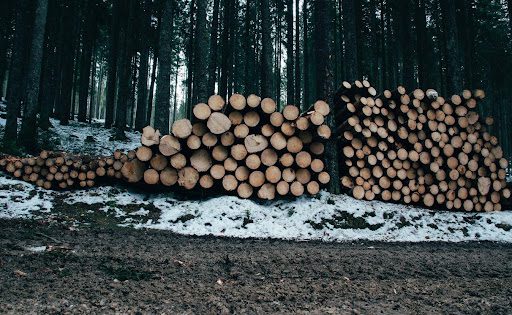Marketing is necessary to raise awareness, make sales, and meet customer needs. It bridges the gap between supply and demand by integrating the customer perspective. Marketing and sales are equally instrumental in selling timber for top dollar. At William A. Day Jr. & Sons, we help private landowners not only by harvesting timber but by managing the timber marketing process.
In this guide, we have explained the role of marketing in selling timber and why you should market forest products.
Marketing and Its Pivotal Role in Forest Management
Today, consumption and production are treated separately. However, marketing bridges the gap between them by connecting various stakeholders. In essence, marketing uses the principles of economics, social psychology, communication, and sociology to understand customer behavior.
It seems simple, but marketing is a complex and broader term open to interpretations. In forest management, marketing means selling timber to get top dollar for lumber and forest products.
Customers expect more from sellers. Their demands include:
- Cost savings
- Top-notch product quality
- Superior knowledge
- Supply security
- Excellent customer support
To successfully sell your timber, these standards must be met. However, it’s challenging for private landowners with little to no networks in the timber market to achieve any of these objectives. This is why it’s so important to partner with a reliable logging company that can handle your timber marketing.

Step-by-Step Guide to Timber Harvesting & Marketing
1. Contract A Forester or Logger
Before harvesting timber from your land, you should have a forest stewardship plan. For that, you’ll want to hire a professional forester who can guide you through the forest management process. This person may or may not have actual experience in timber selling and buying. Either way, they’ll help you achieve your goals and enhance the value of your timberland over the long term with a forest management plan. By hiring a forester or a logger, you’ll ensure that you:
- Receive the value of your timber.
- Get a sale designed to meet your goals.
- Sign a sale contract.
- Get a fairly administered sale.
2. Plan Your Harvest
Your contracted forester or logger will advise you regarding the types of trees to harvest to satisfy the productivity conditions of your woodland. It could range from clearcut and light thinning to shelterwood cut, depending on the nature of tree growth and long-term objectives and plans.
Once trees are selected for harvest, estimate the volume of wood or forest products that will be cut. The common products in timber selling are poles, sawlogs, veneer logs, fuelwood, and pulpwood.
3. Determine Harvest Time
If you want to maintain land productivity, you should determine optimal seasonal harvest timing. Factors like timing influence the price and marketability of your harvested timber. Your main objective should be to maintain land productivity for the future.
Seasonal timing also helps mitigate diseases caused by bark beetles and insects. Determining seasonal harvest timing can also address wildlife issues and protect species.
4. Find Out Timber Worth
The timber prices vary because there are no pre-determined pricing systems. We wrote a whole blog about this last month. The short version is that these factors are key to understanding your timber’s value.
- Tree species, size, and quality will affect the price. Some species are more valuable than others, and so the wood from these species is priced higher than the others. Similarly, trees with large diameters are valued higher than small ones.
- The distance to the mill or other buyers can affect the price because the farther you’re from the mill, the higher hauling cost will be and vice versa.
- Logging difficulties such as soil moisture and terrain steepness also affect the value of your timber.
- Market conditions can also influence the price. Poor market conditions result in lower prices and vice versa.
5. Sale Advertisement
If you aren’t working with a logger who will handle the marketing of your timber harvest, selling the timber may be a real challenge. This is where timber marketing comes to play. The best way to increase your prospects is by sending a sale prospectus to potential buyers. Your logger or forester may be able to provide you with several such buyers, even if they aren’t handling your marketing. You can also place advertisements in local papers or online to sell your timber.
Once you have a buyer, you’ll need to negotiate with your buyer and prepare a contract.

As a Maine-based logging company also serving New Hampshire, Day Logging takes care of clients’ entire timber harvest and marketing process. Feel free to reach out to Day Logging to learn more about how they can help.
